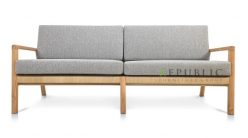Nesting boxes important to barn owl conservation
Gaffney Ledger (subscription), USA – Jan 23, 2014
(Editor’s Note: This article appeared in Monday’s Ledger with the last line of the story inadvertently dropped that contained the name of the barn owl box company’s website and phone number
We have had a number of calls from area residents wanting to know where to purchase the boxes, so we are running the story again in its entirety. To find more interesting facts about barn owls and how to install a barn owl box, go to www.barnowlbox.com or call 1-877- 637-8369.)
* * *
PITTSBURGH, Pa. – Did you know that a family of barn owls consumes over 3,000 rodents per year?
An innovative new nest box for barn owls may enhance rodent control programs and help conserve this large white owl around the world. Designed by a leading owl researcher, the nest box is made of molded plastic, is lightweight and easy to install, and features a landing ledge, an entrance hole, a research window and a removable front.
Mark Browning, a field researcher for the Pittsburgh Zoo who conducted the first satellite telemetry study of the barn owl, designed the box to provide farmers with a longlasting, affordable accessory to their pest management programs and to enhance barn owl conservation efforts.
“The barn owl is being used for pest management in the vineyards of California, sugar cane fields of Australia, dairy and crop farms of the U.S., and the oil-palm plantations of Southeast Asia,” said Browning. “Such enterprises report needing to use less poisons and having less crop damage as a result. The trouble is that wooden boxes are heavy, labor intensive to build and frequently need replaced.”
Two different models of the barn owl box have been devised and each has a different method of mounting according to one’s needs.
The barn model fits within the walls of either wooden or metal buildings. Modern metal barns – which have many advantages over the old wooden barns – have accidentally become one of the downfalls of the barn owl, which has declined in a number of northern states in the U.S.
“Barn owls have always been associated with manmade structures,” said Browning. “But as metal barns increasingly replace old wooden barns, the owls lose prime nesting sites. This is one of the most limiting factors for a large bird like the barn owl that requires a spacious cavity in which to breed.”
The barn box satisfies both the needs of the farmer and the owl by allowing the owls access to their box, but not the interior of the building.
Many choose erect their barn owl boxes on posts in full sun. The problem is the heat that builds up in the interior. The post model combines a number of innovative technologies to keep the box near ambient temperatures. The post box can also be mounted in a tree.
The barn owl, 12 inches tall with a 30-inch wingspan, sports a white face, throat and chest, and has golden wings. Known as the spirit owl, ghost owl or monkey-faced owl, this large predator is the widestspread land bird in the world, and ranges throughout the United States where it prefers open habitat such as meadows, pastures, cultivated fields, and wetlands. They have large broods for a raptor and often produce more than one brood per year.
As farmers move further away from poisons and take the integrated pest management approach, they are finding that barn owls can help reduce crop damage while at the same time reducing the need for poisons, resulting in less toxins entering the ecosystem.
“Barn owls are prolific breeders and voracious hunters,” says Browning. “A family of barn owls can consume thousands of rodents per year. Putting up a box can produce a lot of benefits, not the least of which is attracting these beautiful owls to your property.”
To find some interesting facts about barn owls and how to install a barn owl box, go to www.barnowlbox.com or call 1-877-637-8369.





